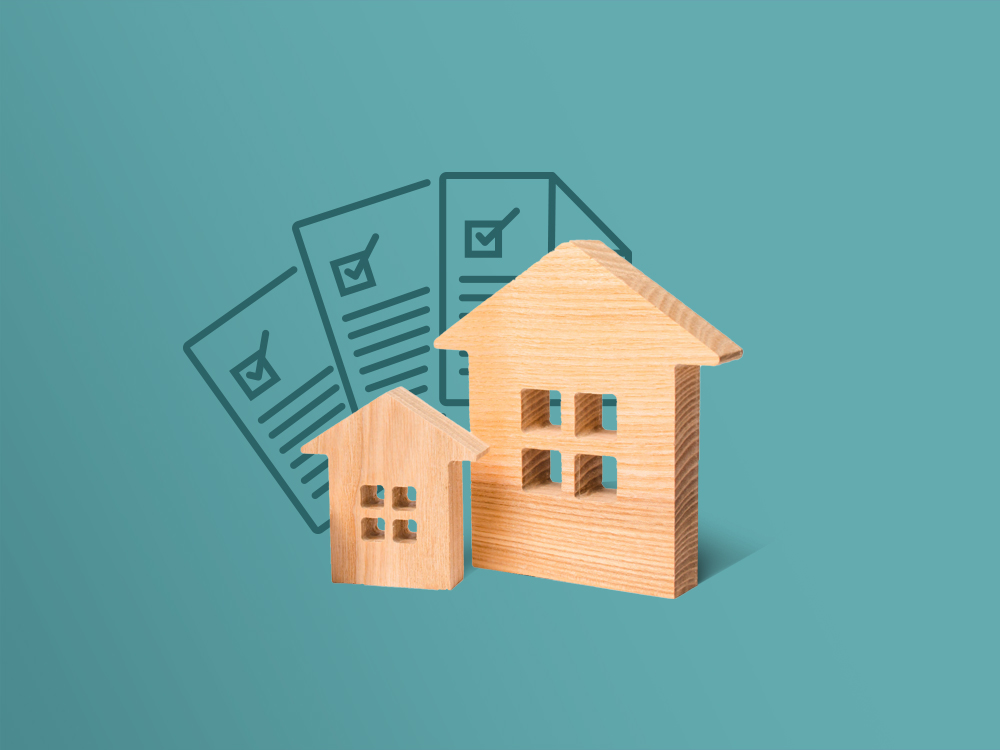Guide to conveyancing
The stage of buying a property between having an offer accepted and completing the purchase is known as conveyancing.
In almost all cases, a conveyancing solicitor deals with most of the work. Even so, there are important decisions to be made, so it’s worth understanding the process and being prepared to ask the right questions.

Instruct a conveyancing solicitor
The seller’s estate agent will probably recommend someone, but you don’t have to accept them (they may be paying an introduction fee to the estate agent). Compare the rates they’re charging with independent conveyancers to see if you can find a better deal.
Current prices for conveyancers in the UK range between £500 and £1200, plus around £700 for ‘disbursements’, which means costs such as searches, the Land Registry fee and fraud checks.
Look for a conveyancer who is registered with a professional body. When you discuss fees with them, make sure to ask whether the disbursements are included – ask for an itemised list.
If they’re offering a ‘no move, no fee’ deal, check what it means – would you still have to pay third party costs, or do you need to take out an insurance policy? Also, will you have to pay a deposit, or pay the conveyancing bill at exchange, or completion?
Even though it may seem straightforward, conveyancing can be a surprisingly complex business and lead to disputes with clients. So the more you can find out about the company to reassure yourself, the better.
Review the draft contract
You’ll need to check the tenure of the property – whether it’s freehold or leasehold. If you find that the lease has less than 80 years to run, think twice about whether you want the property. If it’s below 60 years you should almost certainly reconsider unless you're fully aware of the implications, being unable to mortgage the property being an example. If you're buying the leasehold property with the intention of extending the lease then now would be a good time to check out our helpful guide to extending leases.
Gather up all the documents to support the contract, including the TA6 form you’ll receive from the seller, and go through them with the conveyancer.
Once you’ve instructed a conveyancer, stay in touch with them and find out the name of the person who is handling your case, so you can ask them about specific details. For example, you may need to know about restrictions and costs relating to a leasehold property.
Many conveyancers have online case management systems, so you can see the progress of the transaction. This can be helpful, to keep things moving.
Arrange a property survey
This isn’t a legal requirement, but it’s definitely recommended. A professional surveyor will spot any issues with the property and could save you thousands of pounds, for example if they spot evidence of damp or dry rot. You could then renegotiate the price, or even decide not to go ahead. Keep your conveyancer up to date with any developments following the survey and get everything set down in writing.
Conduct searches
Your conveyancer will do these, but you should be alert to whatever they find. Are there any plans for a new road or property development nearby? Are the title register and title plan, showing the seller’s legal ownership, properly lodged at the Land Registry? Is the property you want to buy at risk from flooding? Is there any issue around contaminated land, ground stability or other hazards? What’s the situation with the water supply and drainage – would it affect any plans you might have to do building works?
Your conveyancer will also search Local Authority files for details of things like public paths and common land.
Beyond these standard items, there may be specific searches relevant to your local area. Some parts of the UK have disused mines beneath them. Some properties are liable for ‘chancel repair’, which is an ancient responsibility to pay for churches’ maintenance.
Mortgage and insurance
If you need a mortgage to buy a property, the lender will carry out a valuation to assure themselves that their money is protected. Typically, the buyer pays for this, but some lenders will waive the fee in order to get your business.
They will also require you to take our buildings insurance before you exchange contracts – as soon as exchange happens, you’re responsible for the property. Compare quotes for buildings insurance. If you’re borrowing from a bank, they will probably recommend their own insurers, but you don’t have to accept their suggestion.
Signing contracts
Your conveyancing solicitor will have received a draft contract from the seller’s solicitor when the conveyancing process started. As you get closer to exchanging contracts, your conveyancer will ensure that all enquiries have been answered satisfactorily and that the fixtures and fittings in the property that were included in the deal are actually there (consider visiting the property to make sure).
The two solicitors will agree a completion date – usually between one and four weeks following exchange of contracts - and make sure you’ve arranged to make a deposit into your solicitor’s account that will have cleared in time for the exchange. This is usually 10 per cent of the property value and is forfeit if you pull out of the deal after exchange.
Exchanging contracts
On the day of exchange, your solicitor and the seller’s solicitor typically have a phone call where each of them read out the contracts, to make sure that they are identical, and then send them immediately to one another by post. Once this has happened, you are in a legally binding contract to buy the property, with a date fixed for you to get the keys.
If for some reason you don’t complete the purchase, you will lose your deposit. On the other hand, if the seller refuses to sell, you can sue them. They’re also unable to accept any other offers on their property after exchange.
At this point, the property deeds are frozen for 30 working days so that your solicitor can process payment to the seller and make an application to the Land Registry to transfer the property deeds into your name.
Your solicitor will send you a statement saying how much you need to pay to complete the purchase. This amount will need to be cleared into your solicitor’s account at least a day before completion. Then your solicitor will apply to your lender for the mortgage loan.
Completion
Some time in late morning or midday on completion day, the seller’s solicitor confirms that they have received the outstanding money, then the seller drops the keys at the estate agents and you can pick them up and move in.
There are then just a few final issues to conclude: your solicitor will pay Stamp Duty Land Tax on your behalf, you’ll receive legal documents from the Land Registry around 20 days after completion, the conveyancer will send the title deeds to your mortgage lender (who will hold them until you’ve paid off the loan) and will send you a bill for their services.
Bingo. You’re a property owner.





